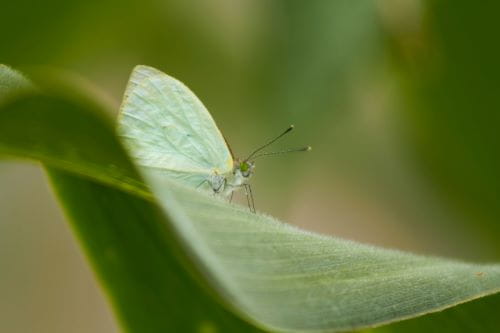In Part 1 of our series on updating the Montessori biology curriculum, we looked at the history of classification and the prevailing use of the five- and six-kingdom approach in Montessori classrooms. We explored phylogenetics and the Tree of Life in Part 2 and discussed the reasons this approach is preferable for presenting ideas in life science: While the five- and six-kingdom charts reflect a snapshot of extant species, branching diagrams like the Tree of Life show evolutionary relationships and, as such, present a larger and more complete picture of the history of life. Phylogenetics (literally “origin of the tribes”) groups organisms based on common ancestry, connecting extant organisms to their recent and distant ancestors.
We saw on the Tree of Life that each branch represents an ancestor and its descendants. The organisms in a lineage, or clade, change over a very, very long period of time; they evolve. How does this happen? How does a new branch get started? We will address these questions here, in Part 3 of our series, as we take a closer look at adaptations and how to incorporate this concept into Tree of Life and classic Montessori life science lessons. Our final installment, Part 4, will be devoted to larger questions on evolution.
Traits and Adaptations
Simply put, adaptations are traits that help an organism fulfill its needs and survive and reproduce in its environment. “Adaptations can take many forms: a behavior that allows better evasion of predators, a protein that functions better at body temperature, or an anatomical feature that allows the organism to access a valuable new resource.” Adaptations can be structures—like specialized leaves or beaks, or other characteristics—like speed or camouflage. The following examples show how organisms can adapt in response to changes or challenges in the environment:
- Conifer trees, like pine, fir, and spruce, have needles, which are specialized leaves adapted for the environment in which these trees live—usually cold and/or dry regions. The very narrow form of the needles helps them preserve water by “reduc[ing] the surface area exposed to dehydration, and the waxy coating, or cuticle, outside the thick epidermis provides a barrier to water loss.” Moreover, while some species of pine are resistant to low-intensity fires due, in part, to their thick bark, their shed needles are also instrumental in both protection from fire and the reproduction of individual trees. Shed needles on the forest floor are easily ignited by lightning strikes, for example, and “the surface fires that consume such litter don’t typically kill mature pines while ‘flushing’ out the seedlings of competing trees, so in a sense pines help perpetuate themselves by their own dropped foliage.”
- The peppered moth (Biston betularia) is one of the most well-known examples of camouflage as an adaptation to a changing environment. In its adult form, it may be a pale color peppered with black speckles, or a darker color peppered with light speckles. The darker form is more common in urban areas where soot once covered trees and rocks, and the lighter form is dominant in more rural areas where lichens cover rocks and trees. “This changing form is the result of natural selection; during the industrial revolution, when trees were black with soot, those forms that had white markings would stand out and inevitably be predated upon [italics added].” The darker colored moths survived in larger numbers, passed on their coloration trait to their offspring, and more individuals with the darker color trait prevailed in the changed environment.
While we tend to think of traits as singular characteristics like specialized leaves or speckled wings, it is the collection of traits making up any one organism that contributes to its survival. It is mind-boggling indeed to think about one’s entire body (phenotype—an organism’s observable traits, and genotype—the genetics underlying the phenotype) as an accumulation of integrated adaptations and traits. Let’s look now at the connection between adaptations and natural selection.
Natural Selection
Natural selection is one of the central mechanisms of evolutionary change; it is the process behind the evolution of adaptations. Priscilla Spears (2021) explains:
The opinions expressed in Montessori Life are those of the authors and do not necessarily represent the position of AMS.


